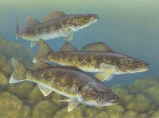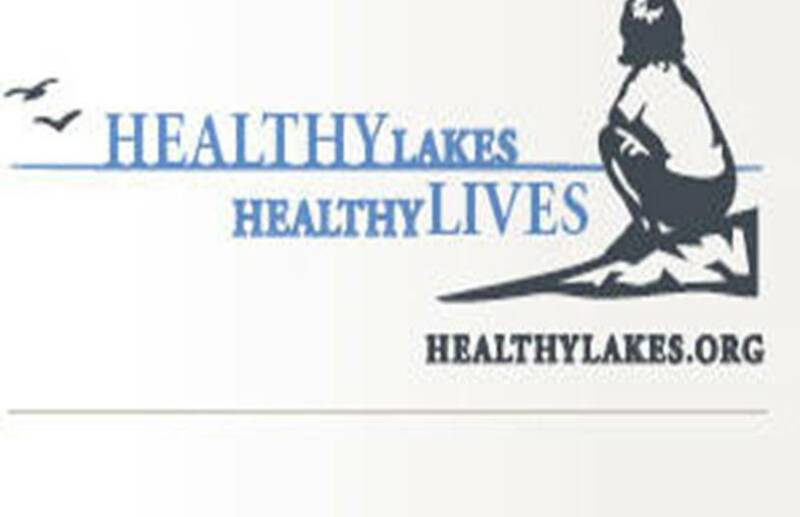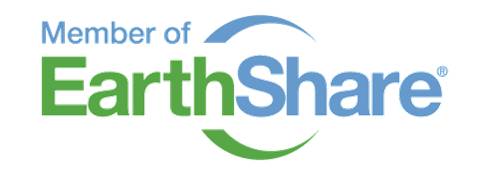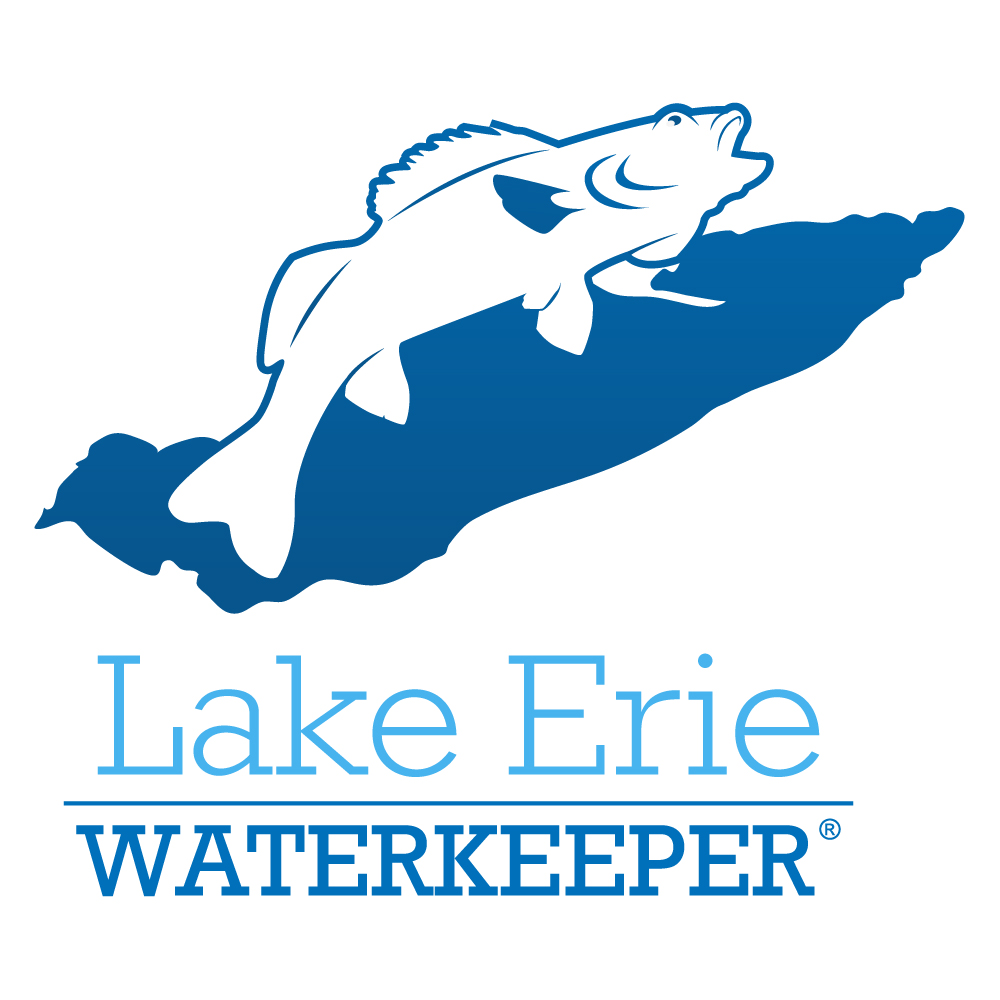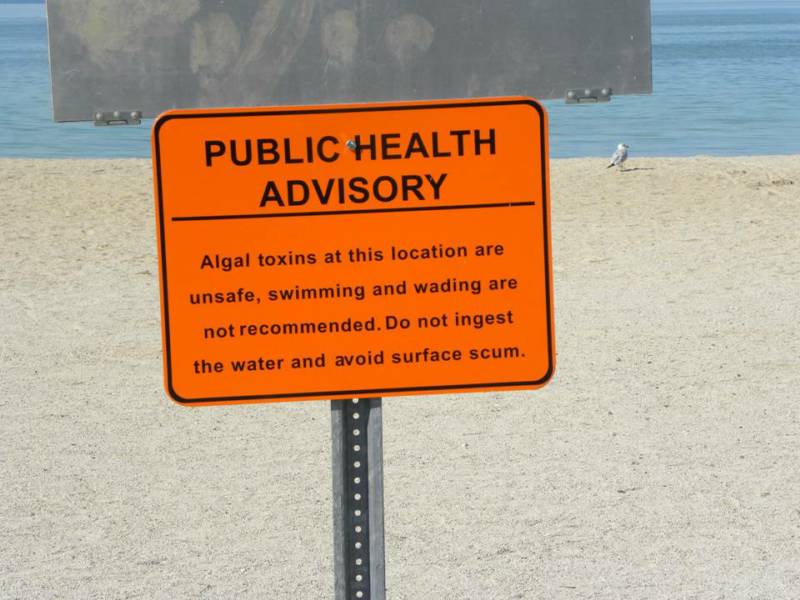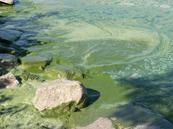Asian Carp Threaten the Great Lakes & the Maumee
The Carp are in the Chicago canal. The battle to keep them out of the Great Lakes continues.
Great Lakes Restoration Initiative
The Great Lakes are getting $475 to help to restore them. Grant applications were do at the end of January 2010 and are now under review.
Industrial Animal Operations Health Water Risk
Battle to keep water discharge permit with Ohio EPA not Ohio Department of Agricultrue continues.
The Pew Commission report says that industrial scale farm animal operations cause "unacceptable" risk to public health and the environment. There are many confined animal feeding operationsCAFO's) in the Maumee/River Rasin/Lake Erie watershed and more proposed. recently Shefield Dairy has been cited.
Fermi 3 Coastal Wetlands
The Michigan Department of Environmental Quality says this about Fermi 3's coastal wetland take will be one of the most significant coastal wetland take in the history of Michigan Coastal wetlands statutes. For the MDEQ statement to the Nuclear Regulatory Commissions click here
Fermi Three will draw 49 million gallons of water from the Western Basin of Lake Erie - just under the radar of 50 million gallons that would require an analysis of the increased fish kills and the thermal plumes. The Fermi application said that phosphorous is not a problem in the Western Lake Erie basin. The application also denied the existence of Maumee Bay. These are major problems in the application that need to be addressed as part of the EIS.
Ottawa River Toxic Cleanup
The Ottawa River's contaminated sediments are close to getting dredged. The cost - and estimated $48 million. Agreements by responsible parties have been reached and the project should by underway this summer. Thanks to US Fish & Wildlife and USEPA for keeping the public informed and making this project happen
Great Lakes Compact
Most herald the passing of the Great Lakes Compact but there is skepticism on the part of some including Marcy Kaptur who worry that water will be treated as a commodity and will be sold in 5.7 gallon containers under NAFTA and other treaties and laws. Click here for the Compact.
Ohio still needs to pass, required by the Compact, implementing legislation on water conservation, protecting water quantities in streams and bottled water. This will be important in the 2009 legislative session.
Lake Erie Waterkeeper Inc.
CALENDAR
Lake Erie Waterkeeper
June 14 7:00 pm
Lake Erie Waterkeeper
Toledo Yacht Club
3900 N. Summit
Toledo, Ohio
GREEN WATER
Lake Erie has two primary sources of phosphorous - the Maumee and Detroit Rivers. In 2009 the Detroit Free Press and the Windsor Star talk about the magnitude of the problem. Turbidity contributes to the growth of bad algae according to a 2009 study. Most say that the most phosphorous in Western Lake Erie comes from agricultural runoff from the Maumee. Additional phosphorous comes from sediments that are open lake dumped, lawn fertilizer, wastewater plants, storm water, factory farms, and??? Studies on algae in the Maumee and Lake Erie continue. The power plants should make every effort to reduce the increased temperatures into the bay and lake of their 3 billion gallons of water used daily.
ALGAE & ROUNDUP ...OSU Research
Roundup?? Is Roundup the underlying cause of toxic algae and dead zones? Click here for more information.
Study finds major source of ecoli is factory farms
Lake Huron Factory Farm EColi study shows factory farms are the dominant contributor of ecoli into Lake Huron. Click here for the article
Green Water Grows Lyngbya - Microcystis Algae
LYNGBYA THRIVES ON NORTHERN MAUMEE BAY AND NEARBY LAKE ERIE SHORES
Highpoint, North Carolina upgraded their wastewater plant and the lyngbya is nearly gone. Sewage in the River Raisin and other tributaries to the northern shores may, along with thermal plumes from power plants, be the underlying cause of the growth of lyngbya. Click here for a report on Lyngbya. For a picture of lyngbya taken August 17th, 2008. The algae is getting worse every year researchers tell us. Lake Erie is once again at a tipping point.
What can people do to help? Use dishwasher detergent with no or low amounts of phosphorous - some have 8.5% - others have none. If you use lawn fertilizer, when your lawn is mature no phosphorous is needed. The middle number on the bad should be zero - if you hire your lawn to be fertilized - ask for no phosphorous. Get in touch with the Waterkeeper and get a group top check the levels of phosphorous in a ditch, creek, or river near where you live
WAYS TO HELP LAKE ERIE WATER...FISH
Buildings, streets, yards and parking lots take the place of bare ground, forests and wetlands. Lake Erie is 80% developed with farms, urban, etc. with the greatest loss of wetlands. As in the 50-s and 60's, the Western Lake Erie waters having growing quantities of algae because of too much phosphorous that dies and creates a dead zone -water without oxygen in the central basin of Lake Erie.
For finding green products
When paving use pervious concrete
To help the waters - plant native plants.
Daily Modis Aerial Views of Lake Erie, Lake St. Clair & Detroit
ASIAN Carp Updates
Lake Erie - Great Lakes & Related Issues
State of the Great Lakes Binational Report US & Canada 2009
Lowering Lake Levels prompt studies - what are impacts on Lakes Erie & Ontario Detroit Free Press Nov. 7, 2010
Wastewater overflows in the Great Lakes - Detroit leads Detroit Freepress Nov. 7
UT Great Lakes talks center around chemicals in our water, wind and more Toledo Blade Nov. 8, 2010
Chesapeake Bay - nutrients - algae. Restoration failing - Nutrients plague Washington Post Nov. 7
Lake Superior's dormant algae
Canadian government lacks know how to protect water Ottawa Canadian Press November 9th
Cleveland's Sewage - settlement votes Cleveland Plain Dealer Nov. 15
Western Lake Erie Please Help
1. Adopt numeric Nutrient Standards
2. No fertilizer and liquid manure on frozen ground
3. Pass distressed watershed rules
4. Restrict phosphorus in mature lawn fertilizer
5. Support funding for wastewater treatment plants to reduce combined sewer overflows(CSO's) and sanitary
overflows(SSO's) and reduce phosphorus discharges in wastewater plants
6. OEPA, ODNR, ODA public outreach to inform citizens on the importance of reducing nutrient loads
7. Sample for algae toxins at public beaches throughout the summer
8. Stope open lake dumping
9. Fund Heidelberg water quality testing in the Maumee and Sandusky watersheds
10. Study orthophosphate impacts on drinking water and algal blooms
Algae - where - toxic?
NOAA tracking
Western Lake Erie in the summer of 2010 experienced growing algae problems - more algae and more toxic algae than previous years. The island of PutnBay had to bring in water because they could not treat the water fast enough to get the algae and toxins out. Water was brought brought in by boat. For the first time Ohio State Park beaches were closed because of algae. The algae is reportedly causing illnesses from contact.
Ohio EPA together with local public water suppliers with visible algae near the intake are testing the water for cyanotobacteria to protect public health. Open lake dumping continued through the summer and is ongoing in the fall. Open lake dumping increases turbidity that increases algae (Ohio State Sea Grant UT Lake Erie Center 2009).
Algae winding down Port Clinton News Herald Article Major algae testing story Toledo Blade August 29, 2010
Toledo spews sewage into Maumee River/Maumee Bay/Lake Erie
Reported illnesses Grand Lake St. Marys & Lake Erie Col Disp 09 09 2010 Akron Related Reservoir - Do not boat or swim
Grand Lake St. Mary's article - Indiana is saying no to Ohio manure Algae Bowling Green Drinking Water article
Beach warnings at East Harbor State Park on Lake Erie Lake Erie algae worst in decades i- August Blade article
Dr. 'Bob' Brundage Scholarship
2012Applicationfrom UT Lake Erie Center Graduate Students
The 2011 winner was Betsy Bodamer Scarboro, the 2010 winner was
Todd Crail The Dr. Brundage Scholarship is an annual $500 scholarship to a graduate student at the UT Lake Erie Center in honor of former board member and great environmentalist, Dr. Robert Brundage..
Detroit River Contributes to Nutrient Problems in Lake Erie
For the past three years teh Detroit wastewater plant has been dumping tens of thousands of sewage sludge into the Detroit and Rouge Rivers. The problem peaked in the summer of 2011 when only two of the 14 incenerators were operational and the sludge got out of hand. The quantity that went into the rivers and Lake Erie is being determined. The Detroit Wastewater Plant is the largest single unit plant in the U.S. The plant dumps billions of gallons of raw sewage, partially treated sewage and combined sewers into Lake Erie each year contributing to the algal blooms.
Environment Canada finds that the Detroit River is dumping more phosphorus in Lake Erie than originally thought.
OPEN LAKE DUMPING ISSUE HEATS UP
There is a hearing on open dumping on March 29, 2012 at 6:30 pm at Toledo Council Chambers. Open Lake dumping started August 27, 2011
Appeals to open lake dumping: Briefs Filed August 9, 2010:
For the National Wildlife and others brief Fort the Ohio EPA and Army Corps brief Blade article 06-03-2010 Public Radio
An appeal has been filed to the permit issued by Ohio EPA to allow 800,000 cubic yards of dredged sediments to be dumped in the open lack The National Wildlife Federation, Ohio Environmental Council, Izaac Walton League, Lake Erie Charterboat Association and the Western Lake Erie Waterkeeper Association filed the appeal to the permit. The press release in the appeal. A letter from OEPA Director Chris Korleski and ODNR Director Sean Logan asks the Army Corps of Engineers to put put all dredged sediments in the open lake in the summer of 2010. Please keep the pressure on not to allow all sediments to be open lake dumped. Call Governor Strickland at 614-466-3555.
Permit issued April 2010 OEPA Response to Public Comments Open lake dumping comments: Mayor City of Toledo Jeff Reutter Ohio Sea Grant National Wildlife Federation Western Lake Erie Waterkeeper Association City of Oregon and Toledo Resolutions
To learn more about open lake dumping -
Ohio EPA press release on Toledo Harbor Dredging Application Ohio Sea Grant article that states that bad algae likes turbidity.
Waterkeeper speech at OEPA open lake hearing Open Lake Dumping Blade January 14 Oregon resolution on open lake dumping Open lake dumping Press article January 7, 2010
Open Lake dumping Blade January 4, 2010 Army Corps assessment - open lake dumping ok for water and fish. Corps Concept Habitat Units Corps Concept Toledo Lighthouse Fish Island. Quantity chart of open lake dumping 1994-2009/2012 Point Place harborlands
Open lake algae Blade article Sept. 2009 Taft asking to end open lake dumping Army Corps rules and confined disposal cost, information dumping
UT studies on dredge, confined Put sediments in mines study Reduce sediments on farms study, another study, Blade article Open Lake agreement to stop open lake dumping
ALGAE ...........ITS IN MANY MANY WATERS
Grand Lake St. Marys - extesnice article on Grand Lake issues and Ohio's impacts on Inidana with regard to factory farms
Lake Champlain - what they are doing to reduce algae
BLUE WATER SATELLITE PHOSPHORUS DETECTION??
Bob Vincent's Blue Water Company says it can detect where the greatest concentrations of phosphorus are If this works, it could be just what Lake Erie and its tributaries need.
Click here for the 2009 journal report. Click here for the 2000 journal report. These reports were provided to the Western Lake Erie Association by Blue Water.
FDS Appeal ends. The appeal was dropped at the end of 2011. Officials have stated that this project is dead.
FDS Coke being sued for Nonpayment
A lawsuit was filed in Lucas County Court for nonpayment to a Michigan consultign firm according to a September 11 Toledo Blade Article.
In August the coke plant got approval for power - Toledo Blade.
In March the coke plant won an appeal that confirms construction for the plant is committed - Blade Article
Coke Plant: Appeals Filed
"The Sierra Club, in tandem with Harbor View - a village downwind of the proposed site - has appealed the permit modification on the grounds that too much time has elapsed." -- The Blade, April 1, 2008
On January 31, 2008, the Ohio Environmental Protection Agency had issued a modified permit-to-install for FDS Coke LLC. To read the OEPA news release, click here.
The January 31, 2008, permit-to-install is available here, and the June 21, 2007, FDS application is available here.
The OEPA refuses to set any standards in this permit for the 1.1 million tons of CO2, the most conspicuous greenhouse gas, that will be released.
This new coke plant will have more emissions than the old Interlake Coke Plant on Front St. in Toledo, Ohio . . . about 3x more, according to OEPA records.
The Ohio Environmental Protection Agency's response to public from December 2007 submissions is available here.
Additionally, the OEPA has also issued a permit-to-install for "a cooling tower to be used as part of an electric generation facility the company also plans to build." You can view this permit here.
Further information from the Ohio EPA about the proposed FDS Coke plant in Toledo and Oregon, Ohio, can be found here.
To learn more about this plant of heavy pollution and its unknown backers, please head over to our Coke Plant page.
Bayshore First Energy Fish Kills Etc
First Energy announces reduced plant operations OEPA says Bayshore fish kill permit decision in about 60 days from June 23rd.
Walleye Bayshore Blade Pollick August 2010
Bayshore kills - Steve Pollick thinks kills mean little - Blade 6-13-2010 Bayshore kills - economics Blade Tom Henry & Editorial 6-2010
May 2010 Gentner Economic Fish Kill Study
Natural Resource and others Bayshore Comments Ohio Environmental Council and others Comments Western Lake Erie Water Association and other Comments
Great Lakes Huge Fish Killing Power Plant FIRST ENERGY BAYSHORE Information
Bayshore October 2009 OEPA ODNR recommendations to Bayshore/First Energy
Send a letter to Governor Strickland and plant manager to close the units now during low electrcal use
March 3 , 2009 Ohio EPA Bayshore Fish Kill Public Meeting click here
Toledo City Paper, August 20, 2009 article on fish kills. Click here
Toledo Blade article on fish kills says that fishing is at least an $800 million dollar business in Ohio. Click here for Feb. 23, 2009
Akron Beacon Journal article discusses fish kills - First Energy - fish kills do not matter Click here for March 3, 2009 story
Detroit Free Press - Bayshore Fish Killing Machine - Click here for March 3, 2009 story
CBS WTOL story on the fish kills click here Toledo Blade March 4, 2009 on fish kill meeting on cost click here
Toledo Blade March 8, 2009 Bayshore Greener Steve Pollick click here Press Publications March 5, 2009 Bayshore Thermal Impact article click here
For an aerial view of the Bayshore plant click here.
For the USEPA/OEPA consultant review of Kinetrics report from September 2008 click here. for the February 2009 Tetra Tech recommendations and review of the Bayshore plant click here
For the company Kinetrics summary report on fish kills click here For the full company Kinetrics report on fish kills click here
To catch and eat fish requires a license and then there are rules. To kill the fish and do nothing - unlicensed - no rules. The Bayshore Power Plant is known as the Great Lakes largest fish killing power plant. The Bayshore plant, according to OEPA, kills more fish than all of the other Ohio power plants combined. ODNR says the power plant kills more fish than all the hatcheries produce annually,
The Bayshore First Energy power plant reports show fish kills averaging 126,000 fish a day caught on the screens and 6 million fish a day that go through the screens. . Find out more about the fish kills and comment at an Ohio EPA meeting March 3rd. Click here for a Fish Kill Meeting Flier.
Bayshore conducted studies released in 2008 from 2005 and 2006. Click here for a summary report on the 46 million fish caught against the First Energy Bayshore Power plant screens(known as impingement) and the 2.2 billion fish that go through the screens(known as entrainment). The First Energy Bayshore Power Plant appears to be to be the greatest fish killing power plant in the Great Lakes. For the full detailed report click here. The report indicates that most of the water is drawn from the Maumee River, and for at least two months in the two year period studied all of the water in the Maumee River went through the plant. The data indicates walleye, perch, and bass are killed along with emerald shiners that top the list. The Bayshore Plant is also said to kill more fish than all other Ohio power plants combined -click here. The Bayshore/First Energy plant has thermal impacts - click here for the report. For the December 2008 Kinetrics Benthic/Thermal Report click here. For the remedies being studied by First Energy called modeling click here(Note First Energy is not looking in to the best known solution, a cooling tower, which the nuclear plants in the area have). For the amount of Maumee River water that goes through the plant click here.
The Maumee River is the most biologically productive river in the Great Lakes and the power plant in the fall, according to power plant studies, pulls the entire Maumee River waters through the plant in a day. The Bayshore power plant is also thought to be the largest fish killing plant in the Great Lakes with company studies showing over 46 million fish per year caught against the screens and over 2 billion larval fish that go through the screens. This averages to 126,000 fish per day on the screens and 6 million larval fish per day through the screens. Limits are set on sports fish for all that catch the fish and eat them but the power company that harms the fish with mercury, kills the fish from thermal water use and feeds the algae by warming the water has no limits, pays nothing, and degrades the ecosystem of Maumee Bay and western Lake Erie....
The power plant owners, Bayshore/Toledo Edison/First Energy comment on the fish kills in a September 28th, 2008 Press Publication article. Mark Durbin, Edison Communications, states that a fish diversion plan and cooling tower are both options First Energy is looking at. He calls the cooling tower possible but not probable - click here for the story.
Algae Toxin Information by Dr. Earl Campbell
Columbus Dispatch articles
BayshoreFirst Energy fighting transparency in records for fish kills reductions...more to come
NRDC, Sierra, Western Lake Erie Waterekeeper, Ohio Environmental Council & Great Lakes Alliance Appeal Bayshore Fish Kill permit Issued by OEPA
The appeal on the fish kills is on hold - waiting to see if the anounced closing of three of the four units will happen and if First Energy will put up the louvers for the 185 million gallons a day, that they committed to. The estimated loss due to the natural resource damages caused by the fish kills has been estimated at $30 million a year. The Bayshore power plant was ordered by Ohio EPA to reduce larval fish kills by 60% and juvenile and other fish kills by 80%. To accomplish this, OEPA is requiring Bayshore to:
1. Provide information on the Louver study by March 1, 2011
Provide information on the Louver study by March 1, 2011

 2.
2. Plans using Best Available technology(BTA) by July 1, 2011
Plans using Best Available technology(BTA) by July 1, 2011
3. Begin construction by March 1, 2012
Begin construction by March 1, 2012





 4.
4. Construction complete by April 1, 2013
Construction complete by April 1, 2013
5. Verification monitoring May 1, 2012
Verification monitoring May 1, 2012
In the News
Asian Carp
Report on seperation Columbus Dispatch, links to studies
Maumee very susceptable Toledo Blade
Bayshore Power Plant to close 3 of 4 units
Algae/Nutrients cause downgrade in credit Florida
Algae Lake Erie green again: Toledo Blade
Bayhsore Fish Kills
fully public August 10, 2011. Ohio EPA issued the permit July 25.
For engineering drawings: Drawings to come
Fish Kills in Intakes Chicago Tribune June 15, 2011 including Baysore
Water Withdrawal debate starts in Ohio legislature Blade May 18, 2011
Dead walleye in Lake Erie Spring 2011 Blade Article May 13, 2011
Proposed Power Plant Fish Rules no friend to fish Blade Article March 2011
Coke plant news story Feb 2011 Free Press
FRACKING ODNR Report released on Fracking/Youngstown Earthquakes Report
NUTRIENT LOADINGS LAKE ERIE AND MORE
A report by United States Geological Survey shows Lake Erie nutrient loads
by River and by source- point sources(watewater), fertilizer, manure from large
factory farms(CAFO's) and small ones, urban runoff. Click herefor an appendix to the report that provides Lake Erie tributaries/rivers details.
Lake ErieAlgae Blooms 2011NOAA
Nature's ConservancyRestoring Erie Marsh
Ice Boatingon Maumee Bay
KeepingRaw Sewage out of Lake Erie
Coke PlantCourt RulingDec 2010
Grand Lake St. Marys - Alum Treatment no good last fall -consultant report
Grand Lake St. Marys Treatmentquestionable Dispatch
CormorantControl and Backgroundarticle. Nov. 25
Lake Eriecommercial fishingarticle Nov., 2010
RestoreLake Erie Op Ed Ohio Env Council Nov. 21
DavisBesse history
OHIO EPA PHOSPHORUS TASK FORCE REPORT
Hers is a link to the press release, a summary report and the full report. The report does not provide immediate steps needed to reduce phosphorous loads but rather recommends more studies and voluntary steps. With Lake Erie levels 9" lower than in 2009, heavy rainfalls and major wind events, Lake Erie could be in for a devastating 2010. Waterkeeper comments and suggested comment letters to come.
Algae 2011
Lake Erie Waterkeeper Conference
Presentations from
March 30 coming soon
Columbus Dispatch Lake Erie article
http://www.dispatch.com/content/stories/local/2012/03/15/State-discusses-recommendations-to-ease-Erie-woes.html
Ohio Report to help Lake Erie
http://dnr.ohio.gov/portals/12/docs/waterqualityreport.pdf
Above is the report that was promised to address agricultural nutrient inputs to Lake Erie. The report calls for voluntary action and fails to do anything close for Lake Erie compared to Grand Lake St. Marys.
While Ohio has aggressively taken action to help Grand Lake St. Marys - with $5 million for alum in 2012 alone, continuous monitors, sediment traps, algae collectors, aerators and...a ban on fertilizer and liquid manure on frozen ground, Lake Erie is getting voluntary steps and $50,000 to educate the farmers.
Furthermore the report highlights what great economic impact farms have while remaining silent on the over 100,000 jobs and over $10 billion to the economy that Lake Erie supports along with drinking water for millions of Ohioans. Lake Erie generates millions in tax dollars for fishing and boating licenses and fines. $50,000 for Lake Erie in 2012 is an insult.
Lake Erie needs monitors at the tributary outfalls and in the lake, a Batelle assessment similar to what was done for Grand Lake St. Marys, and $5 million to do pilot demonstration projects as is being done for Grand Lake St. Marys. Lake Erie needs help and Ohio needs to give back some of what it is getting from Lake Erie to help Lake Erie's troubled waters.
Sandy
Here is Governor Kasich's contact information - tell him to help Lake Erie and tributaries with monitors and do a Batelle study that recommends $5 million in projects that can give Lake Erie's troubled waters some relief. Tell him Lake Erie needs as much or more help than Grand Lake St. Marys.
http://www.governor.ohio.gov/Contact/ContacttheGovernor.aspx
Call or email your state representative
http://www.house.state.oh.us/index.php?option=com_displaymembers&Itemid=125
Or state senator: http://www.ohiosenate.gov/directory.html
Please take action to help Lake Erie.....
Please visit our new website at lakeeriewaterkeeper.org
Information on this site is being transferred to the new site
Tell Senat - Ohio implementing language for Great Lakes Compact falls short of protecting Lake Erie water quality and quantity and right of water users - not just shoreline owners - to appeal water decisions. Please call the Ohio Senate ----
OHIO REPORT ON AGRICULTURE FAILS LAKE ERIE
The report promised to address agricultural nutrient inputs to Lake Erie. All it does is ask for voluntary action and fails to do anything close for Lake Erie. Ohio is doing much more for the nutrient problem at Grand Lake St. Marys. Ohio's actions for Grand Lake St. Marys has been aggressive - with $5 million for alum in 2012 alone, continuous monitors, sediment traps, algae collectors, aerators and...a ban on fertilizer and liquid manure on frozen ground, Lake Erie is getting voluntary steps and $50,000 to educate the farmers. The Ohio Ag Lake Erie report highlights what great economic impact farms have while remaining silent on the over 100,000 jobs and over $10 billion to the economy that Lake Erie supports along with drinking water for millions of Ohioans. Lake Erie generates millions in tax dollars for fishing and boating licenses and fines. $50,000 for Lake Erie in 2012 is an insult. Lake Erie needs monitors at the tributary outfalls and in the lake, a Batelle assessment similar to what was done for Grand Lake St. Marys, and $5 million to do pilot demonstration projects as is being done for Grand Lake St. Marys. Lake Erie needs help and Ohio needs to give back some of what it is getting from Lake Erie to help Lake Erie's troubled waters.
Tell Governor Kasich he needs to do more to help Lake Erie Here - tell him to help Lake Erie and tributaries with monitors and do a Batelle study that recommends $5 million in projects that can give Lake Erie's troubled waters some relief. Tell him Lake Erie needs as much or more help than Grand Lake St. Marys.
Lake Erie Algae 2011
.From Toledo to Cleveland
10-20 miles from shore
60'Deep
So thick slowed boat motors

